Not far from London’s Euston station is a slightly spooky old derelict building. The former London Temperance Hospital on Hampstead Road has been closed for many years now, leaving a shell of mismatched buildings falling into disrepair. The idea of a hospital set up by members of the temperance movement intrigued me, so I decided not only to have a closer look at the old hospital itself but also dig into its history.

The temperance movement first began to gather pace in the early nineteenth century, fuelled by growing concern over social problems caused by mass alcohol consumption. It was often advocated by members of religious groups, and many campaigners focused on abstinence from spirits rather than beer and wine. Teetotalism, or the total abstinence from alcohol, began in Preston in 1833, with the philanthropist and newspaper owner Joseph Livesey among its early advocates. The movement gained support on both sides of the Atlantic – something which later would become significant for the Temperance Hospital.
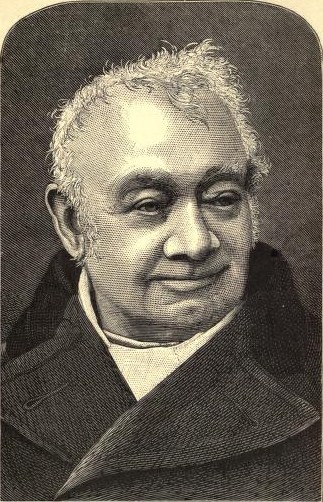
The Temperance Hospital was first opened by the National Temperance League in 1873 on Gower Street, a stone’s throw from Hampstead Road. The treatment given to patients at the hospital differed from other hospitals at the time because the use of alcohol was discouraged. In the nineteenth century it was not uncommon for patients to be treated with alcohol for a wide variety of illnesses and symptoms, including delirium and respiratory problems. The Temperance Hospital’s board of management claimed that their alcohol-free approach improved the efficiency of staff and aided patient recovery times.
Within only a few years of opening, the Temperance Hospital’s site on Gower Street had become too small and in 1879 work began on a new building on Hampstead Road. It wasn’t long before the hospital was extended again, as the commemorative foundation stone pictured below demonstrates. Work began on a new wing in 1884. One of the fundraisers for the Temperance Hospital in its early days was the first Pearly King, Henry Croft. Croft often raised money for hopsitals in London by taking part in pageants and carniavals – before the founding of the National Health Service, hospitals were dependent on private donations and fees to keep running. The teetotal Cadbury family, the famous confectioners from Birmingham, were among those who donated money to the Temperance Hospital.
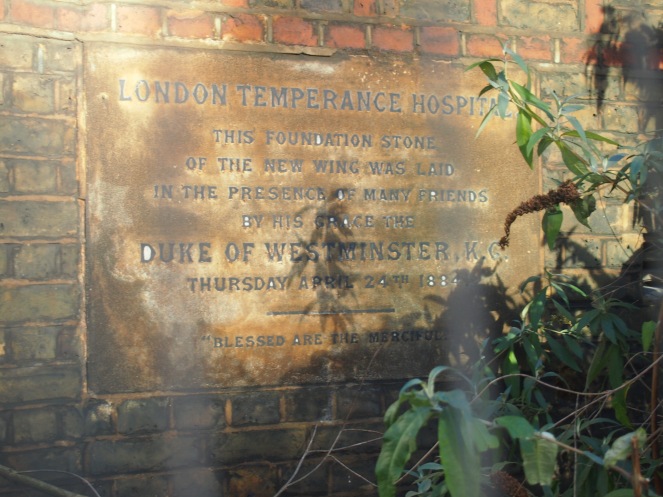
In the 1890s, decades after the high profile cholera outbreaks that eventually led to London getting a better network of sewers, the Temperance Hospital still had beds set aside for cholera patients. Clearly, despite the many sanitary improvements made to London in the 19th Century, parts of the city were still squalid enough to be dogged by the presence of water-borne diseases like cholera.

In 1948, the Temperance Hospital (now known as the National Temperance Hospital) became a part of the newly-founded National Health Service. Over the years it was home to various different departments, and in the 1980s was part of a pioneering scheme set up to help treat victims of torture. This scheme was run by the charity Freedom from Torture, whose origins lay in Amnesty International’s Medical Group. Starting life in a shed in the yard of the Amnesty International office in London, the move to the Temperance Hospital in 1986 enabled the charity to provide torture survivors with medical treatment and therapy, as well as documenting their experiences. In 1986 45 people used the centre at the Temperance Hospital, but it grew rapidly and eventually moved to a purpose-built facility in North London.
The hospital closed in 1990, although the building itself continued to be used as office space and for clinics until about 2002. Since then, it has fallen into disrepair and “urban explorers” who have visited and photographed the hospital’s interior have found a sad scene of vandalised and water-damaged rooms, with few of the original Victorian features intact.

This is an unloved corner of London. It’s only a few minutes’ walk north of the glossy new office blocks that line Euston Road, but around the old hospital are dated hotels, run down tower blocks and empty shops. The whole area is under threat from the development of the proposed High Speed 2 railway line from Euston to the Midlands and north-west of England. As part of this scheme, Euston station would have to be considerably enlarged and the houses, offices and curry houses of the Euston area would all be bulldozered to make way for this. The entire community would be obliterated.
Perhaps that was the reason why, despite the sunshine, there was a definite gloomy atmosphere.
Behind the old hospital is a burial ground, which was converted into a park after it closed to new burials in 1877. The graveyard had been owned by the church of St James on Piccadilly in central London, and in 1788 the church had purchased a piece of land in the then-rural area north of Marylebone after the churchyard at St James’ was deemed to be full.
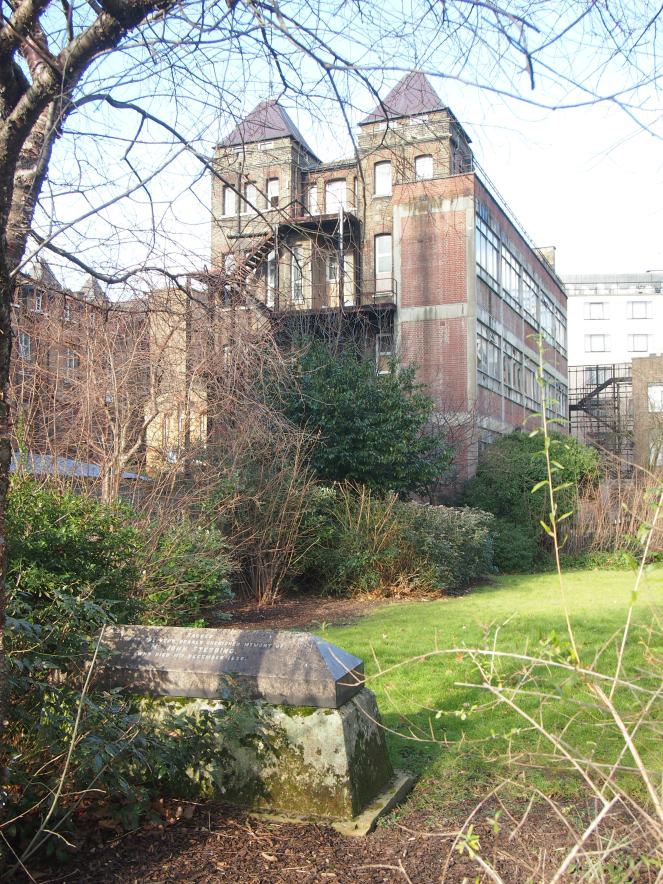
Most of the gravestones that must once have filled this burial ground are now gone. The most prominent memorial remaining is that of the Christie family – of the auction house fame. The tall granite cross commemorates various members of the Christie family, including the auction house founder James Christie, and a young seafaring family member called Edward, who died aged 19 in 1803 after catching a fever on board a captured slave ship in the Caribbean.
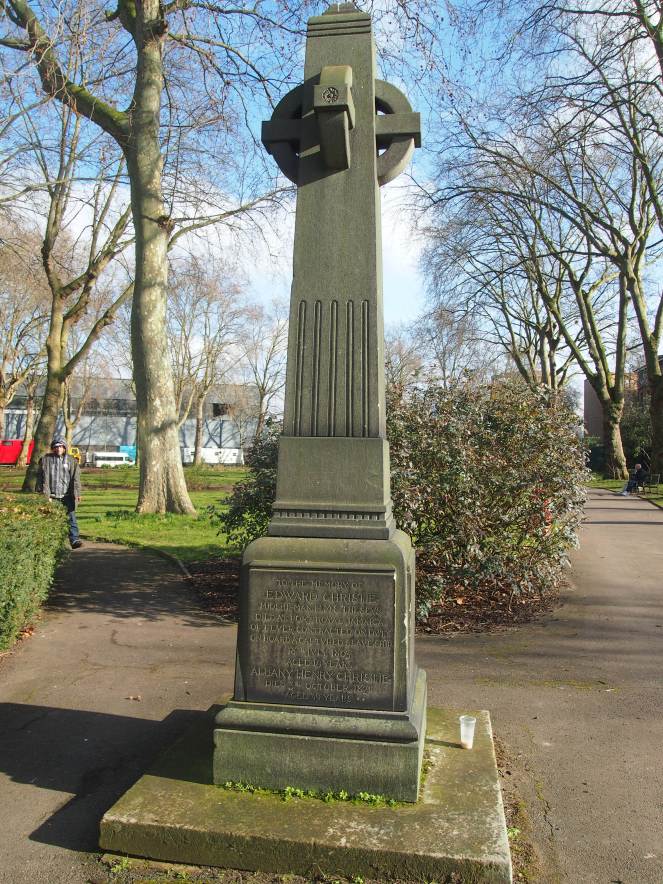

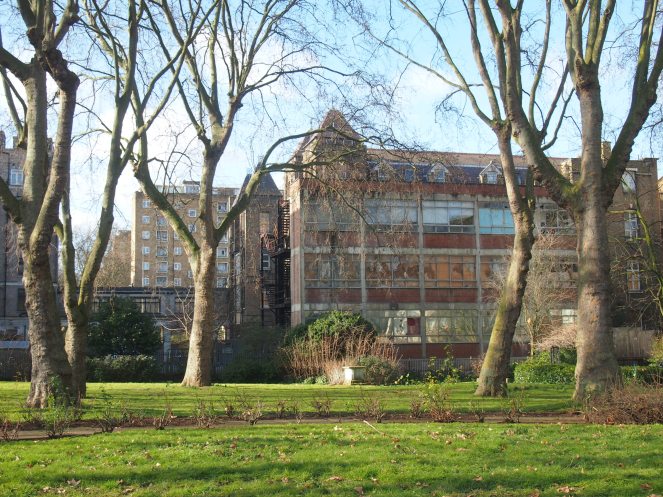
The view from St James’ Gardens clearly shows the attractive form of the hospital’s Art Deco extension, which was built in 1931. Designed by architect William Binnie, the extension was funded by a wealthy American temperance advocate, Samuel Insull – the new wing was named the Insull Memorial Wing after its benefactor, who donated $160,000. The Insull wing is very different architecturally from the Victorian parts of the hospital, with its curved, pale walls.

It’s quite possible that this little piece of London’s history will be gone forever before too long, if the High Speed 2 project goes ahead. With it would go the memories of the people who worked at the Temperance Hospital or were treated there over the years. Presumably the old burial ground of St James’ Gardens would also disappear, and its forgotten inhabitants relocated to a mass grave in another cemetery.
The shabby old walls and the solitary gravestones tell their own stories, but this was a sad visit for me – a visit to a place that’s been left behind, a place that will probably soon no longer exist. So many people already walk past the old hospital buildings without giving them a second thought – will anyone miss them when they’re gone?
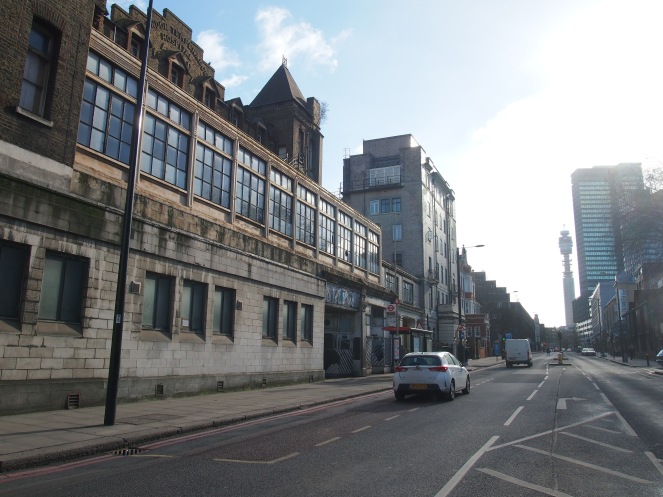
Update, 2019: the Temperance Hospital has now been demolished, and the burials in St James’ Garden excavated with a view to reburial elsewhere, as both sites fall under the area of the new High Speed 2 development at Euston Station.
References and further reading
Lost Hospitals of London – National Temperance Hospital http://ezitis.myzen.co.uk/nationaltemperance.html
Why it matters: National Temperance Hospital, Hampstead Road, Kentishtowner, 30th July 2012 http://kentishtowner.co.uk/2012/07/30/why-it-matters-national-temperance-hospital-hampstead-road/
University College London Hospitals – Trust timeline http://www.uclh.nhs.uk/aboutus/whoweare/archives/Pages/Trusttimeline.aspx
Derelict London – Hospitals http://www.derelictlondon.com/hospitals.html
Freedom from Torture – History http://www.freedomfromtorture.org/about/33
London Gardens Online – St James’ Gardens http://www.londongardensonline.org.uk/gardens-online-record.asp?ID=CAM096


Yes, is sad that another piece of London’s history will more than likely disappear, thats why its important to record what we can….. shame about the burial ground, its amazing what is tucked away, waiting to be found 🙂
LikeLiked by 1 person
There are so many little pockets of history to be found around London. Although the area’s very run down, if everything is demolished to make way for HS2 I suspect no trace will remain of the community that once lived there.
Of course, Charles Dickens said something similar when they were building Euston and King’s Cross 🙂
LikeLiked by 1 person
Interesting piece. I didn’t know this area is going to be levelled by HS2. I’ll mss the restaurants and sweet shops on Drummond Street. The homogenization of Inner London continues…
LikeLike
It’s really sad that the entire community will disappear if HS2 goes ahead. I suspect that it’ll be replaced with a shopping mall-style rail terminus and lots of overpriced, “rabbit hutch” flats way beyond the means of the people who used to live in the area.
LikeLiked by 1 person
Ah a lovely post on a lovely building! As much as I like the Victorian architecture, I find the curved art deco design quite nice and fitting somehow to the building. Hopefully it won’t be destroyed full and if it does have to go that it’s recorded properly.
LikeLike
Yes, I really liked the art deco design as well. The clean lines and white tiles seem very appropriate for a hospital building. It’s a real shame that this building has been left to decay, and like you, I do hope that if it has to go, its history won’t be forgotten.
LikeLiked by 1 person
Seconded – that extension is Deco architecture at its best.
LikeLiked by 1 person
I do like that art deco extension! Thanks for another enjoyable piece. It’s hard for us now to appreciate just how influential the temperance movement was in the late 19th and early 20th centuries. They were massively important in Australia too and had a big influence on our licensing laws well into the 20th century.
LikeLike
Yes, I think these days the impact of the Temperance Movement isn’t so widely known. I’ve been reading about some new housing estates in the late Victorian period that were funded or designed by temperance advocates and so weren’t permitted to have a pub or off-licence.
LikeLike
There is a petition calling for protection for the Temperance Hospital and St James Gardens.-
http://www.gopetition.com/petitions/save-st-jamess-gardensthe-national-temperance-hospital-london-nw1.html
LikeLike
Thanks for sharing this!
LikeLike
To ‘These Bones of Mine’, The HS2 Environmental Statement says they are going to demolish it fully. HS2 have bought the land it stands on so its really important to get as many people as possible to sign the petition above.
Thanks!
LikeLike
Thank you for writing this piece, I am one of the people who walk past every day and I did notice it (obviously!). I work in the old cigarette factory up the road, it would be great if this building could be regenerated like that has been.
LikeLike
It is a real shame that the old hospital has been left to decay. There are so many good examples of old factories and warehouses converted for modern uses – sadly I fear that High Speed 2 might be the death knell for the hospital which is a real shame.
LikeLike
I love that building and would hate to see another part of London’s history destroyed for ever. Lets fight for it.
LikeLike
I really hope it is saved and restored. It’s a beautiful place.
LikeLike
Hi joey, Please leave a comment objecting to the demolition on Camden website and tell others, until 11/7/2016. Thanks! Jo
http://planningrecords.camden.gov.uk/Northgate/PlanningExplorer17/Generic/StdDetails.aspx?PT=Planning%20Applications%20On-Line&TYPE=PL/PlanningPK.xml&PARAM0=439017&XSLT=/Northgate/PlanningExplorer17/SiteFiles/Skins/camden/xslt/PL/PLDetails.xslt&FT=Planning%20Application%20Details&PUBLIC=Y&XMLSIDE=/Northgate/PlanningExplorer17/SiteFiles/Skins/camden/Menus/PL.xml&DAURI=PLANNING
LikeLike
I did my training there in 1964. happy memories. loved that hospital,
LikeLike
HS2 have submitted a planning application to Camden Council to demolish the Temperance Hospital. it you love it please leave a comment objecting (Until 11/7/2016). Here is the link-
http://planningrecords.camden.gov.uk/Northgate/PlanningExplorer17/Generic/StdDetails.aspx?PT=Planning%20Applications%20On-Line&TYPE=PL/PlanningPK.xml&PARAM0=439017&XSLT=/Northgate/PlanningExplorer17/SiteFiles/Skins/camden/xslt/PL/PLDetails.xslt&FT=Planning%20Application%20Details&PUBLIC=Y&XMLSIDE=/Northgate/PlanningExplorer17/SiteFiles/Skins/camden/Menus/PL.xml&DAURI=PLANNING
LikeLike
Reblogged this on texthistory and commented:
Hard to believe there is anywhere undeveloped in London
LikeLike
My great grandfather passed away suddenly in 1928 at this hospital. I’m desperately looking for a photograph of him, but it’s also helpful to see the place (even though it is now in ruins).
LikeLike
I have just watched the prog. on tv about the excavations of the gardens by the hos[ital.I am 82 but I used to play in the gardens there as I lived locally. Then as a young teenager I used to sit there in the evenings with my two girl friends. I feel so sad now that no trace of that hospital or gardens will remain. It is so strange to think that all that is being found now we just had no knowledge of then. Oh well , nothing is forever but we have memories.
LikeLike